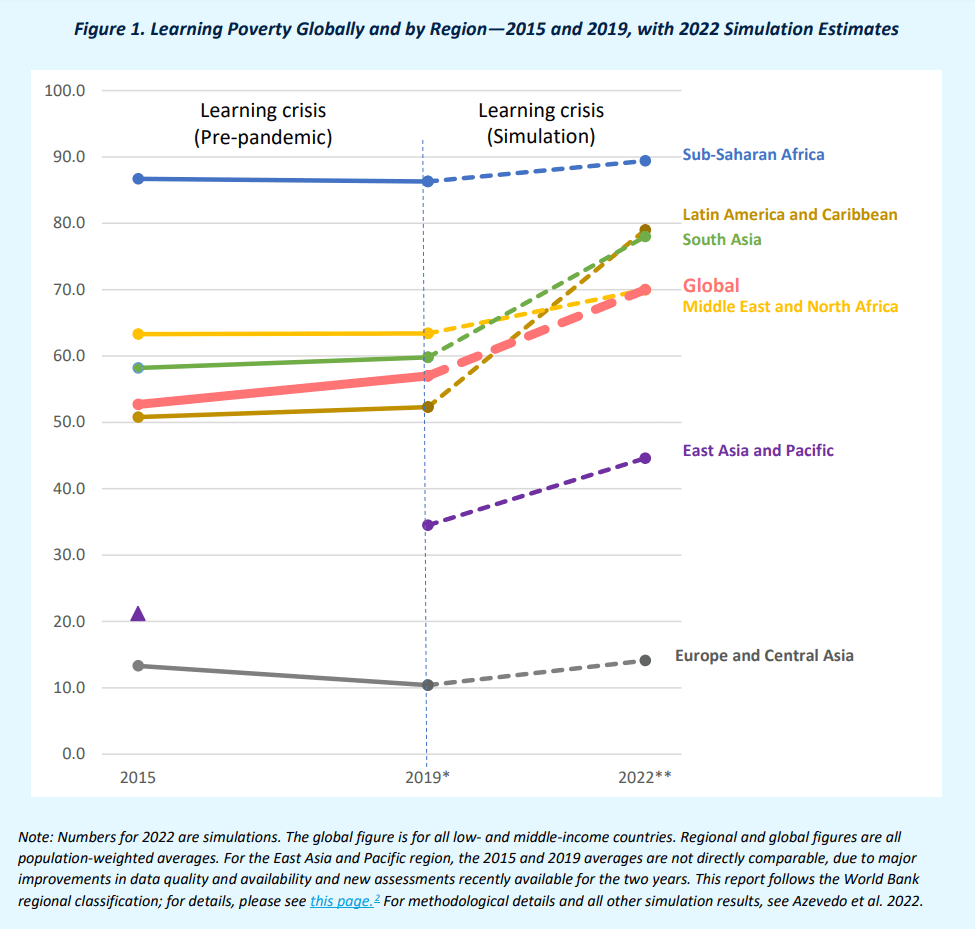The rising levels of learning poverty.
Learning poverty refers to the low level of academic achievement among certain groups of people. It is associated with poor outcomes in terms of both cognitive skills and non-cognitive abilities. This can be due to a variety of factors, such as socioeconomic background or poor educational resources.

Lessons learnt: One of the best gifts we can give to the next generation is a proper education.
Learning poverty refers to the low level of academic achievement among certain groups of people. It is associated with poor outcomes in terms of both cognitive skills and non-cognitive abilities. This can be due to a variety of factors, such as socioeconomic background or poor educational resources. The learning poverty indicator was launched by the World Bank and the UNESCO Institute for Statistics in 2019 to spotlight the global learning crisis in which learning poverty is simply defined as being unable to read and understand a simple text by age 10.
We could face a learning and human capital catastrophe if we don't act decisively to recover and accelerate learning
Nearly 60% of ten-year-old in low and middle-income countries are living in learning poverty, which is a global issue that needs to be addressed. Learning poverty affects children's ability to read and write properly, understand basic math, and think critically.
"Global learning poverty is at crisis levels and continues to worsen in the wake of the worst shock to education and learning in a century." - according to the 2022 Learning poverty status report.

There is a need to act decisively and quickly to recover and accelerate learning. This is because there is a limited window of opportunity to do so. This means using data to informing decision-making. The risks associated with inaction include the possibility that the situation will deteriorate further, which could have a negative impact on learning outcomes. Nations ought to be proactive and take urgent action to reduce learning poverty, else face a learning and human capital catastrophe in the near future, after all the greatest asset of every nation is her people. Given the scale of the challenges and scarcity of resources, countries need to concentrate their efforts on the most cost-effective approaches to tackle learning poverty.
The RAPID Framework
The RAPID framework offers a list of evidence-based approaches that educational systems can implement to help the young and upcoming generation recover lost learning, and to accelerate long-term progress in foundational learning. Governments must ensure that educational systems:
- Reach every child and keep them in school
- Assess learning levels regularly
- Prioritize teaching the fundamentals
- Increase the efficiency of instruction, including through catch-up learning
- Develop psycho-social health and well-being.
There is a growing problem of learning poverty in the world. This problem is often exacerbated by socioeconomic factors, such as poverty and poor educational infrastructure. While there is no easy solution, it is clear that we need to invest more resources into tackling this issue. More and more children are not receiving the education they need to succeed in life. We need to invest in our children's future by ensuring that they have access to quality education.

Adiutor
Adiutor means "helper" - we do just that, by taking a load of your school administration and helping you focus on what matters most: the kids.
